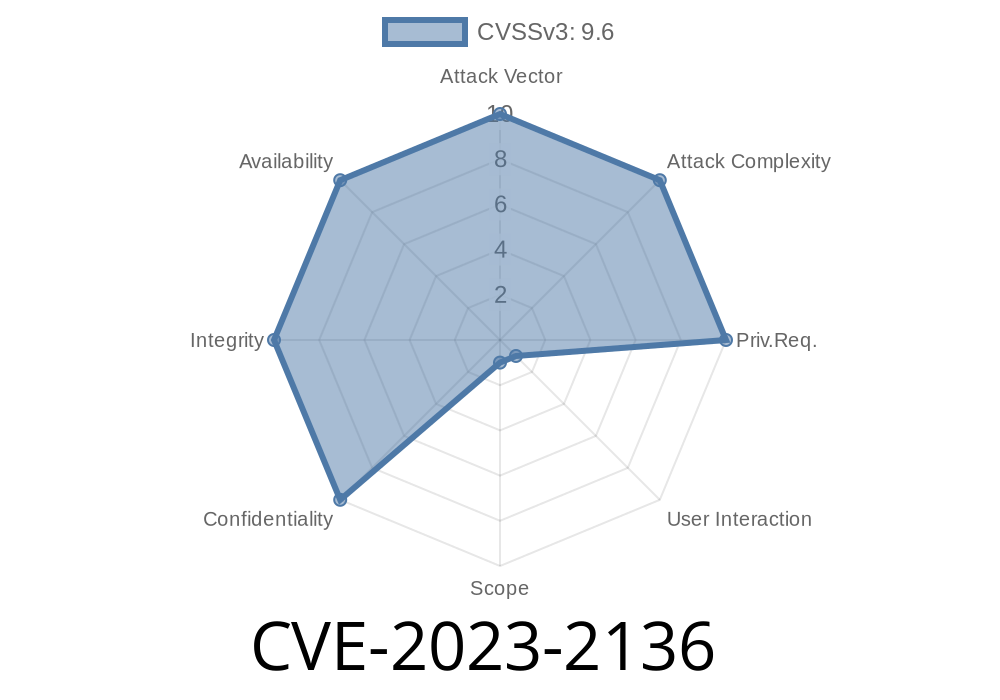A recently discovered high-severity security vulnerability, labelled CVE-2023-2136, in Google Chrome web browser's Skia component leaves users at risk of a sandbox escape attack. Sandbox escapes allow attackers to execute arbitrary code on a user's computer, potentially leading to unauthorized access or sensitive data theft.
The vulnerability is present in versions of Google Chrome prior to 112..5615.137. As a result, it's crucial for users to update their browsers to the latest available version in order to protect themselves against potential attacks.
In this post, we will examine the details of the CVE-2023-2136 vulnerability, including a code snippet illustrating the integer overflow issue, how the exploit may be carried out, and the steps needed to mitigate this threat.
Code Snippet
The integer overflow vulnerability in Skia occurs due to improper handling of size calculations for a specific data structure. The following code snippet demonstrates the overflow:
int CalculateSize(int width, int height) {
int rowBytes = 4 * width; // 4 bytes per pixel
if (rowBytes < || height < ) {
return -1; // Invalid input
}
int totalSize = rowBytes * height;
if (totalSize / rowBytes != height) {
return -1; // Integer overflow
}
return totalSize;
}
In this example, the CalculateSize() function incorrectly calculates the totalSize variable. When width and height values are large enough, the calculations may result in an integer overflow, leading to an incorrect and potentially exploitable size value.
Exploit Details
An attacker who manages to compromise the renderer process in Google Chrome can take advantage of this integer overflow vulnerability to perform a sandbox escape. To achieve this, the attacker would create a malicious HTML page with specially crafted content designed to trigger the integer overflow condition. The sandbox escape would allow the attacker to execute arbitrary code on the user's system, potentially leading to severe consequences such as unauthorized access, data theft, or malware installation.
Mitigations
Google is aware of this vulnerability and has already patched it in the Chrome 112..5615.137 update. Users should immediately update their browsers to the latest version to protect themselves from potential attacks.
The browser will automatically check for any available updates.
4. If an update is found, it will be automatically downloaded and installed. Restart your browser to apply the update.
For more information about CVE-2023-2136, you can visit the following links
1. Chromium - Stable Channel Update for Desktop
2. NVD - Vulnerability Summary for CVE-2023-2136
Conclusion
To sum up, CVE-2023-2136 is a high-severity security vulnerability in Google Chrome's Skia component, which could be exploited by an attacker to perform a sandbox escape attack. Users should make sure they are running the latest version of Google Chrome (112..5615.137 or above) to ensure they are protected from potential exploits. By keeping your browser up to date, you can defense in depth and minimize the risk of falling victim to this and other security vulnerabilities.
Timeline
Published on: 04/19/2023 04:15:00 UTC
Last modified on: 04/27/2023 02:15:00 UTC
